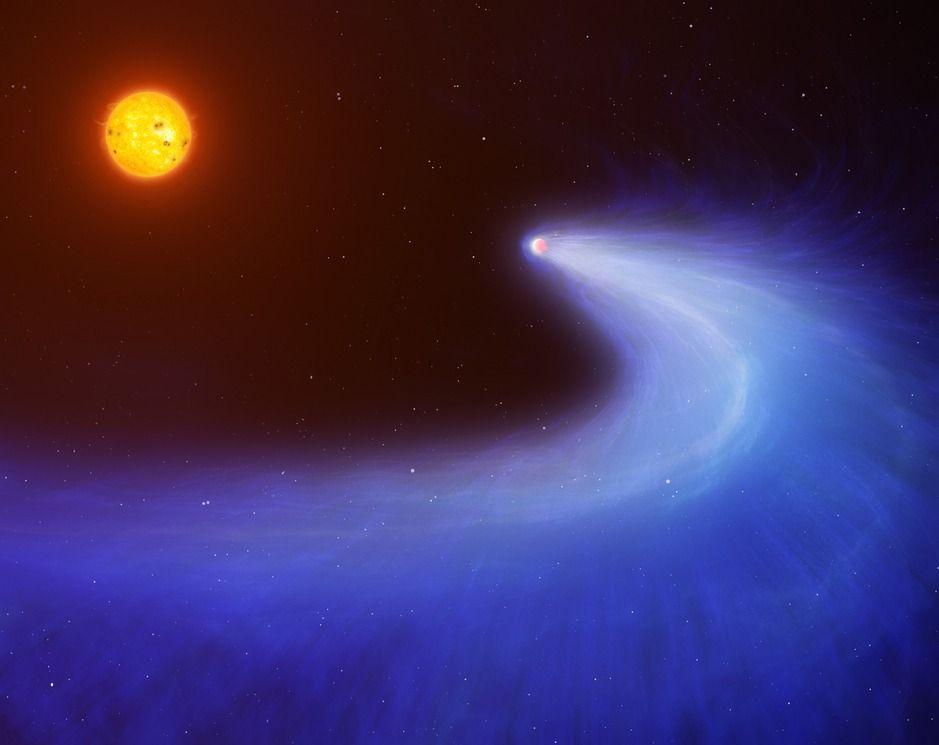
Geneva-led team gets good look at tailed planet

Scientists at the University of Geneva who are looking for planets outside our solar system have found one with a unique feature: a huge tail made of gas.
The exoplanet GJ 436b, as the tailed planet is called, orbits its central star very closely and therefore loses part of its atmosphere because of the star’s intense heat. The dissipating atmosphere takes on the look of a comet’s tail, perpetually following the planet.
Although the international research team working in Geneva discovered the planet years ago, they have only now been able to observe the full tail using the Hubble space telescope. Previously, as GJ 436b passed in front of a star, the team had surmised that a gas tail was obscuring it from view but they were unable to get a closer look to confirm until this week.
The rare observation will allow scientists to better understand how stars affect the atmospheres of the planets that orbit them, the researchers said in their paper detailing the finding in the journal “Astronomy and Astrophysics”.
In addition to the University of Geneva, the research team comprises scientists from the University of Bern as well as France and Britain.

In compliance with the JTI standards
More: SWI swissinfo.ch certified by the Journalism Trust Initiative





























You can find an overview of ongoing debates with our journalists here . Please join us!
If you want to start a conversation about a topic raised in this article or want to report factual errors, email us at english@swissinfo.ch.